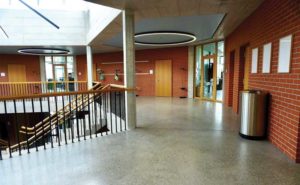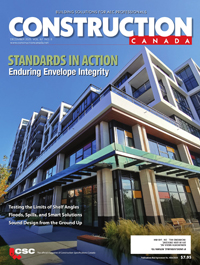How to fix concrete flooring challenges

Repairs can solve many concrete flooring challenges, particularly if clients notice something amiss and contact professionals quickly. For example, some cracks appear with one side noticeably higher than the other. Uneven settling beneath the concrete’s base layer may cause this problem.5 However, injecting slurry or foam under the slab can sometimes remedy the problem.
If the concrete flooring challenges are too extensive to warrant successful repairs, a replacement will likely get the desired outcome. Discussion should take place regarding all the necessary particulars of that route, including what happens to the removed material.
People are more commonly using recycled materials in their homes.6 These options range from upcycled wood to shingles made from rubber. They may also decorate with recycled concrete pieces, particularly in smaller landscaping projects that add character to their properties.
Clarify needs and expectations
Once the concrete flooring challenges are identified, it is time to talk about the specifics. For example, what is the budget, and can there be financing options to make the costs more manageable? What steps can be taken to solve the issue, and what is the project’s overall time frame?
One common way to fix moisture issues is by placing a vapour retarder between the ground and concrete slab, particularly indoors. Although 6-mil poly was the standard choice for many years, it is now common to put a 10-mil barrier under parking-level slabs and increase that to 15- or 20-mils for habitable spaces. In addition, installers often recommend a fully waterproof membrane when water is under the slab. However, if someone still sees evidence of moisture after the fix, it does not necessarily mean the retarder failed. Humid conditions can also cause wetness on concrete flooring when warm air condenses into colder surfaces.
Clients will appreciate knowing how long it will take to get the concrete floors fixed, especially if the affected area plays a significant role in how they run their business. What amount of time must pass for the floor to cure properly and reduce the chances of complications later?

Bring up matters that may require the clients to change how they maintain or use the concrete floors. Do they need to use different cleaning products or stop parking vehicle, such as semitrucks, on the concrete for long periods? The more the client knows before the repair or replacement occurs, the better position they will be in to help the restored floor last longer.
Taking a thorough approach
Whether professionals need to tackle challenges that occurred soon after installation or years later, they should always do so with a careful approach which investigates the root causes and how to control them before the slab is poured. Once engineers evaluate site preparation, soil compaction and bearing strength, they can assess slab thickness and reinforcement measures. Control joints can also mitigate temperature-related cracking. Building use is one of the many other factors considered during this phase.
Maintaining quality control (QC) might mean hiring those with enough experience to lay the flooring and requiring them to complete ongoing training. It could also entail being more specific in conversations with clients about which aspects can make concrete floors fail after installation.
Keep in mind, the process used for fixing current concrete flooring challenges and mitigating future ones can directly impact a company or professional’s reputation—which is why it is best to cover all the bases and help the clients know what to expect.
Notes
1 Read more about best practices for installing concrete floors, www.nfca.ca/free-resources/ concretespecification/.
2 See moisture issues in concrete floors, www.buildings.com/sealants-coatings/article/10185704/signs-a-concrete-floor-has-moisture-issues.
3 Read more about vapour barriers for concrete floors, www.concrete.org/publications/international concreteabstractsportal.aspx?m=details&i=51735989.
4 For more information, read the benefits of polished concrete floors, www.dcpu1.com/blog/benefits-of-polished -concrete-floors/.
5 Learn how to repair cracks in concrete floors, www.thespruce.com/how-to-repair-concrete-floors-1398172.
6 See more features of recycled homes, revolutionized.com/interesting-features-of-recycled-houses-robots-you-probably-didnt-know-about/.
Emily Newton is the editor-in-chief of Revolutionize Magazine. She has more than six years of experience writing industrial topics for the construction, manufacturing, and supply chain industries.








